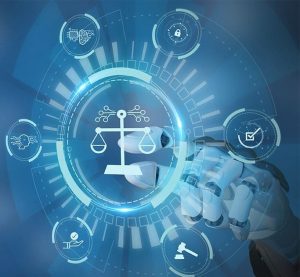
Zone 1: Truth, Disinformation, and Propaganda
Bibbs et.al, explains that Risk Zone One requires tech designers and users to identify how shared information may be under attack while examining the truth in the information properties, and technologies being used, presented, or represented. Example of this risk is AI video that we have seen on social media where it looks real but you end up questioning various things about it. CHT’s AI Society refers to a ‘Breakdown of Shared Understanding’. CHT explained that social media has distorted society’s perception of reality with AI generated fake content. The risk over time erodes our shared reality, weakens social trust, making it harder to discern what is real. Most of these tactics are used to ignite emotional reaction and skepticism in our communities.
Zone 2: Addiction and the Dopamine Economy
Bibbs et.al, explains that Risk Zone Two requires tech designers and users to think critically about implications of technology tools on human interactions. This risk identifies the potential addiction and increased distractions tech has on physiological and psychological well-being of humans. Your brain on social media video explains how social media creates dopamine in our lives and how pleasure cannot be sustained through repetition. She explains that it is called Neuroadaptation. She explains how we enter a dopamine deficit because we constantly seek the dopamine rush, we received from our first interaction with social media. Also, the video on “It was these damn phone” explains the effects of the younger generation dependence to phones has caused their physiological and psychological wellbeing to decline.
Zone 4: Zone 3: Economic and Asset Inequalities
Bibbs et.al, explains that Risk Zone Three requires tech designers and users to assess how new and emerging technologies could affect economic and asset inequality. They explained that some societal risks are access to technology, the ability to monetize and profit from technology, and potential job displacement. The article on the “The digital divide is a social justice” explains economic assets and inequalities. Sander and Scalon explain that digital access is a social issue because there is a divide in between individuals who have access to digital technology and those who don’t. Those who are hindered by digital divide or people of marginalized groups, such as low-income individuals, people with disabilities and rural communities. Sander and Scalon explains that access to technology and internet is a basic human right and essential for modern society. Lack of digital access can hinder individuals’ mobility in education, employment and healthcare.
Zone 6: Data Control and Monetization
Bibbs et.al, explains that Risk Zone Six requires tech designers and users to address the private and public sector’s vast collection of personal and institutional data. Data control and monetization issues are selling data, user rights and safeguarding of data. In “Artificial Intelligence in Social Work: Emerging Ethical Issues,” Reamer explains that AI systems depend on client data. In the field of social work, a lot of client data is collected through case management platforms, automated assessment tools, mobile apps, and analytics used in social services agencies. A lot of the data that is stored are sold or shared between private tech companies and social workers lose full control over who accesses client information and how it is used. Reamer explains that many of these technologies are created by for-profit corporations whose business models depend on monetizing user data.
Hi, I enjoyed your response and thoughtful explanation. I also thought of the Reamer article for zone 6 and the dependance on access to clients data to shape and develop the tech. For social workers this is a double edge sword with the need to keep up with times and adapt to new technology but also protect our clients PHI and autonomy.
Hi there, Great post!
You have an interesting view on the blog post 6, and I can see how the topic that you have chosen to discuss this zone aligns with the zone I found it interesting how you interpreted that AI is needed in the field of social work for tasks such as placing data in the agency’s databases. I think that this is something that is oftentimes overlooked and iI am speaking from experienced as i myself have never noticced the need or understood how AI could have been used to place data into databases
Hi!!
This all tied together really well. The part about misinformation in Zone 1 stood out to me, too. It’s scary how easily false information spreads and how it affects trust, especially in communities that already feel disconnected. I also related to what you said about Zone 2 and the dopamine cycle. It’s crazy how social media has rewired how we cope and connect. I think you made a great point overall, and it made me think about how data control and inequality are connected, too, especially with how tech can exploit vulnerable groups without them even realizing it.